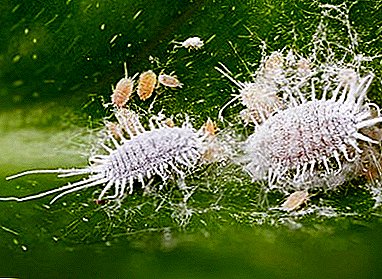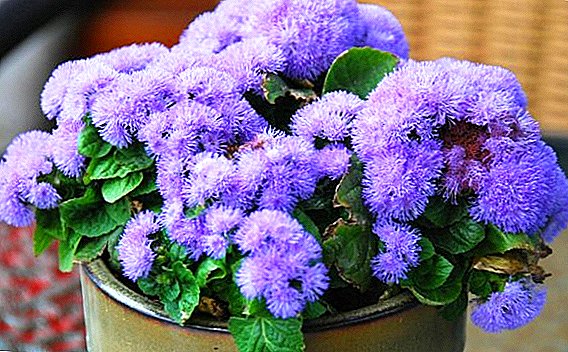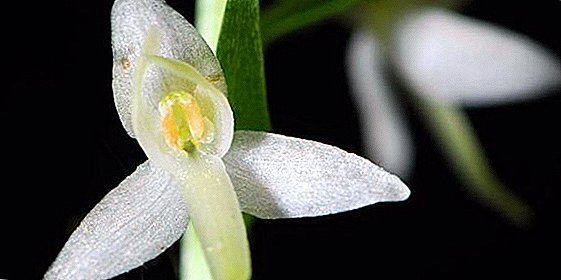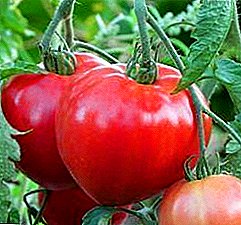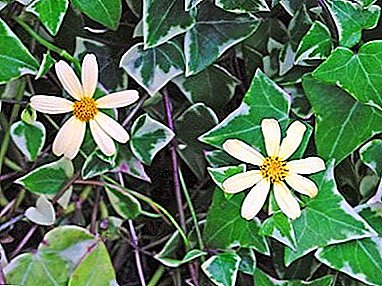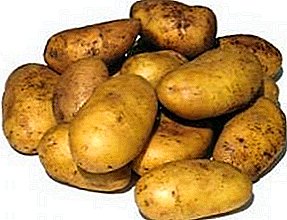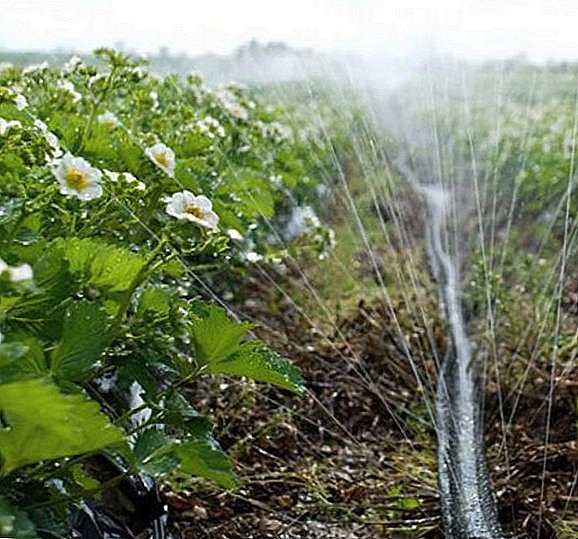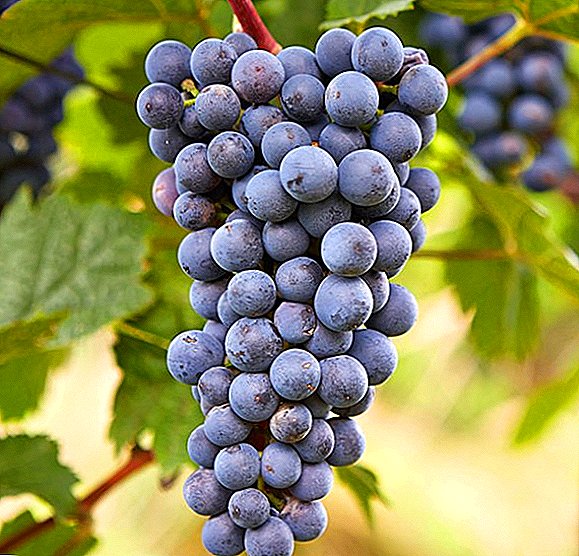
Large berries of early ripe grape variety "Zilga" enjoy success with the Baltic, Belarusian, Norwegian, Swedish and Canadian winegrowers. The hybrid has earned universal recognition due to its versatility, high frost resistance and ease of cultivation. The advantages, disadvantages and features of care for the variety will be discussed further.
Breeding history
The authorship of the variety, for half a century of its existence, has won the love of winemakers all over the world, belongs to the Latvian breeder Paul Sukanteks. He has about a hundred of popular varieties of vine. Therefore, the novelty immediately aroused interest. It is based on maternal pollen of Russian varieties known at that time. "Dark-skinned woman", "Anniversary Novgorod" and Latvian "Dvietess".

The scientist set himself the goal to solve the problem of wine-growers from regions where winters are distinguished by severity. As a result, the Zilgi vine feels comfortable even with a 30-degree frost and without shelter withstands snowless cold days. The variety takes root even in areas where other grape varieties do not hibernate under safe shelter. In addition, it is distinguished by good keeping of ripe bunches during their long stay on the bush.
Did you know? About 80 thousand square meters of land on all continents are occupied by vineyards. Moreover, more than 70% of all plantings are intended for winemaking, 27% - for the collection of fresh fruit and only 2% is used for the production of raisins. The largest producers of different grape varieties are Spain, France, and Italy.
Description
In order to get a general idea of the variety, a brief description of Zilga grapes can be expressed in several words: large-fruited, early ripe, winter hardy hybrid universal use. But for the gardener of this information, of course, will not be enough. Therefore, we suggest to study the features of the species in more detail.

Bush
The plant develops on its own or grafted roots and is distinguished by rather tall shoots that ripen at 85% at the age of one year. Grades usually reach medium height, and own-rooted specimens are significantly higher. For hybrid bushes characteristic of whole, with small cuts three-lobed foliage of large size and dense structure. Each leaf on the back side has a slight smoky bloom. The variety has a high self-pollination.

Bunches
You can enjoy the sweet fruits of this variety in the middle of July - early August. The grapes are tightly assembled into large cylindrical clusters, each weighing about half a kilogram. Often they form additional wings. Lobed and conical clusters also occur, which is quite normal for a species.
Important! If in the narrow courtyard the vineyard area is limited, experienced growers advise to restrain the growth of shoots, stopping them at the level of 8 eyelets.
The ripeness of the variety is indicated by a dark blue shade and a weak touch of oval berries.. They are remembered for a pleasant taste with light muscatel notes and delicate aroma. According to the tasting qualities, "Zilga" is estimated at 7 points out of a possible 10. Fruits contain about 20% sugar, and their acidity does not exceed 5 g / l.
Learn more about such hybrid varieties of grapes as, "Nizina", "Valek", "Victor", grapes Burdak AV, "Lily of the Valley", "In Memory of Negrul", "Libya", "Talisman", "Valentine", " Romeo "," Victoria "," Sofia "," Halachi "," Furor "," Transfiguration "," Baikonur "," Extra ".
A characteristic feature of the variety is to some extent jelly pulp, thick peel and 2-3 grains inside. Housewives use berries for raw consumption, making homemade wines, juices and compotes. Some in the reviews say that if ripe fruits are not removed from the vine for a very long time, they will gradually begin to wilt up on the sun and may even reach the state of raisins.

Characteristics of a variety
Due to the successful combination of maternal qualities, the creator of the hybrid was able to translate into reality all the dreams of gardeners in regions with a harsh climate. With elementary care, the variety allows to collect high yields of high-quality fruits and not to worry that the plant does not survive the winter or will be destroyed by pests and pathogens, microorganisms. Let us consider in more detail in the description of the grape variety "Zilga" its main features.
Did you know? Ukrainians practically do not eat grapes. This conclusion was made by analysts, analyzing the annual consumption of table varieties of culture. It turns out that in our country every citizen does not eat even a kilogram of berries for a year, at a rate of 10 kilograms.
Yield
On average, no more than 3 clusters are formed on one shoot of "Zilgi". And each about fifty berries. In favorable conditions for the cultivation of plants from the bush, you can collect up to 12 kg of crop.

Gestation period
"Silga" is classified for early varieties. Botanists determine the optimal timing of fruit ripeness in 120 days, and consumers say that in favorable weather conditions ripe berries appear after 100 days. In particular, a similar pattern is observed in the southern regions, where the climate is milder.
You will be interested to get acquainted with the technical, early and table grapes
Winter hardiness
Genetic endurance of the variety to cold was the main task in breeding "Zilgi". And the result obtained can rightly be considered an achievement of Latvian breeders. After all, a vine without shelter can spend the winter even at 32 degrees of frost.

Disease and pest resistance
Zilga is not sensitive to the attacks of harmful insects and pathogens. But in the conditions of wet rainy summer, when a favorable environment for the development of various fungi is created, it can be affected by gray rot, mildew, and oidium typical for all grape varieties. Therefore, experts recommend twice a season to carry out preventive spraying with any fungicide ("Fundazol", "Maxim") or with a one-percent solution of Bordeaux mixture.
Important! When planting grapes as a fertilizer in a coma case, do not use fresh pig manure or re-ripened from any other cattle. As a rule, it contains many larvae of harmful beetles, which, to the best of their growth, will begin to feed on grapewood.
Among the insects that are most annoying the owners of vineyards are wasps. As soon as the fruits begin to ripen, they immediately flock everywhere to a sweet delicacy. Subsequently, the clusters lose their presentable appearance. And the berries soon deteriorate. To save the crop from the striped sweet teeth, experienced owners advise first removing all wasp nests in the yard. It is better to do this at night when insects are sleeping. It is better to knock them down in a bucket with boiling water or in a bag with a soaked insecticide ("Aktara", "Bi - 58 New", "Aktellik") cotton wool. If for such manipulations you do not have enough courage or for some other reason you can’t carry out your plans, protect grape clusters in special mesh bags. Since the fight with wasps often does not bring the desired result, for safety, place self-made traps made of plastic bottles near the vine.
We also advise you to familiarize yourself with how to deal with flail and itch on grapes.
Planting and selection of seedlings
Experts call the optimum time for rooting the vine springwhen the weather is stable and the ground warms up sufficiently. But the preparation for planting need to do in the fall.
Important! To the hybrid developed well, leave up to 30 buds on the bush.
Already in the second decade of September - early October, you need to decide on the site of the future bush planting and prepare the ground for it. Ideally for “Zilgi”, a place protected from drafts is suitable where the northern winds do not dominate, and water does not collect during thaw and precipitation.

After digging the selected area make a hole half a meter deep and width. Cover its bottom with a layer of drainage, then cover up to half with fertile nutrient soil. Usually, gardeners use compost, chicken manure or horse manure and the top layer of land for this purpose. All components are mixed in equal parts. Add granular superphosphate. Agrochemists advise to combine all fertilizers as a matter of priority and only then pour out the soil. The pit is filled to the top, covered with a dark plastic wrap and left until spring.

It is desirable to acquire a sapling during the period when you plan to plant. Do it better in specialized nurseries and garden centers. Remember that the quality of planting material determines the viability and availability of the bush for the next five years, so when choosing, be very careful. Take a good look at the root system and the stems. They should have a uniform surface, free of blotches, cracks and other mechanical damage.
Did you know? The fruits of grapes contain about 150 active substances and more than a dozen essential vitamins with a calorie content of 65 kcal.
The roots of a quality seedling should be smooth and fresh. Make sure that they are not putrid, dry or frostbitten areas. Experienced gardeners are advised to slightly scratch the tip of the root process. Fresh wood that appeared on the wound site indicates the freshness of the seedling.

From the proposed range of grape seedlings, give preference to the most powerful and well developed. If you want to buy a graft, choose copies with a half-meter rhizome and a vine. There should be at least one ten-centimeter shoot on the root saplings.
Immediately before rooting you need to put the seedling in a container of water If desired, you can add any growth stimulant. After that, the roots must be treated with a clay mash that will save them from drying out.

When planted in a pit prepared from autumn, they remove the necessary layer of earth so that the roots of the plant are comfortable. Then the deepening is watered until the ground ceases to absorb moisture. After that you can place a seedling in the hole, straighten its roots and cover it with substrate. Do not forget to tamp it carefully to fill the voids formed in the root system. Ensure that 2 peepers are raised above ground level. If we are talking about a grafted bush, the vaccination site should be 3 centimeters higher than the soil.
Important! When planting large vineyards, keep the distance between plants within 1.5-2 meters.After planting, the hybrid needs to be watered and mulched once more with humus or peat near the trunk circles. Mulch will prevent the evaporation of moisture and the emergence of weeds.
Peculiarities of care
"Zilga" has established itself as a very undemanding and grateful variety of grapes. For full development and abundant fruiting the variety needs moderate moisture, timely feeding and competent pruning. We will understand everything in order.
Did you know? The name of the variety "Zilga" in translation from the Latvian language means "blue".
Watering
The hybrid will respond well to moderately moist soil, but will ache and wither in the marshland. Therefore, it is important to water the plant with regard to the location of groundwater. Intensive and systematic hydration require young bushes after planting, as well as during the beginning of the growing season before budding. After flowering, when the ovary begins to form on the vine, it is recommended that watering be stopped and resumed only to the extent necessary in case of long, hot weather. Experts advise to make a shallow ditch for the surplus of water around the wall.

Top dressing
In order for the hybrid to bear fruit every year, the gardener must make an effort. They consist in feeding and alkalization of the acidic earth. But limited to only one organic or mineral substances is highly undesirable. Indeed, at every stage of development, a bush requires certain components.

Illiterate fertilizing exacerbates the development of the vine, so it is important to understand what and when to make a bush. For example, in the spring, when an active increase in biomass begins, the plant needs nitrogen. Therefore, experts advise at this stage of development to use urea, ammonium nitrate or a solution from the infusion of chicken manure. In the period of flowering culture needs phosphoric substances. Therefore, superphosphates are recommended for fertilizers. And to strengthen the vine and cuttings grape brushes need potassium. It is better to make it in the fall, like copper, which affects the frost-resistant qualities of the plant. During the period of laying the next harvest, zinc will not interfere, which affects the number of berries. But for their sweetness during the formation of the ovary, it will be necessary to feed the shrub with a solution of boric acid.
Important! Grapes need 3-4 dressings: in early spring, 2 weeks before flowering, before the ripeness of the fruit and after they are removed from the vine.
Pruning
This procedure should be carried out in early spring or late autumn. And you need to start on two-year bushes. On the "Silga" they practice a fan-cut, which involves 2-3 strongest shoots and the removal of their upper parts at the level of 8 eyes.
Like other early ripe grapes, this hybrid gives a lot of whips. They must be removed, otherwise the vine will not have time to ripen, and in winter it can destroy the bush. Many novice growers complain, saying that most of the plant should be removed. Some even think that after the recommendations on pruning it will have to be restored. In fact, experts say that intensive pruning will not harm the grapes, but on the contrary, it will be good for it. Consider the weight of future clusters and do not overload the bush.
The advantages and disadvantages of the variety
In the reviews about the variety "Zilga" gardeners often mention its following advantages:
- endurance to adverse climatic conditions;
- good rooting rate of seedlings and quick adaptation in a new place;
- unpretentious care;
- possibility of cultivation in the non-covered way;
- high yielding;
- high commodity and taste of fruits;
- crop yield;
- universality in the use of fruits.
"Zilga" stands out not only frost-resistant characteristics a and abundant fruitfulness of shoots. If you do not remove competing, weak and unnecessary branches, the plant will simply destroy itself under the weight of clusters.


